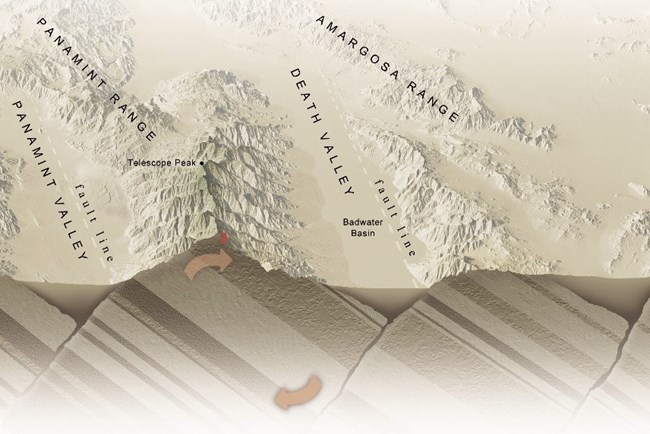
Faults Signify Active TectonicsFaulting is one of the main geologic forces that created Death Valley. Over the last several million years the Earth's crust in the Death Valley region has extended, causing mountains to rise and valleys to sink along faults. 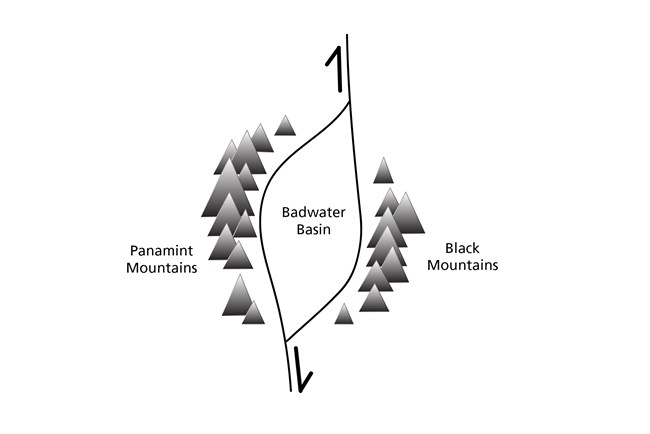
NPS / Christian Poutre & NPS / J. Jurado Death Valley’s current fault system is a bit more complicated. A network of two strike-slip fault zones is linked together by a normal fault zone. The normal fault zone is being pulled apart by the lateral (side to side) motion of the two strike-slip faults (see figure). 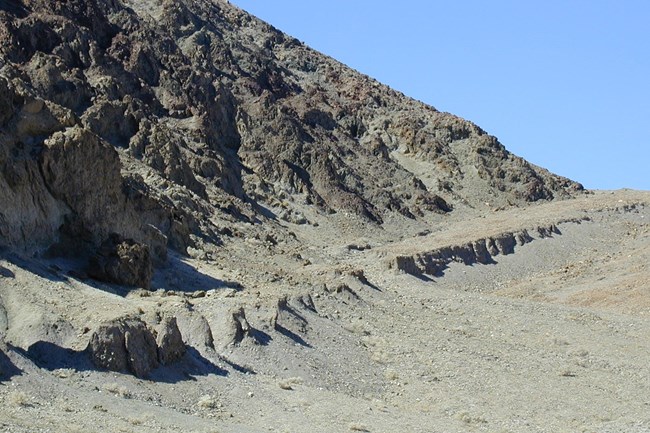
NPS photo Badwater Basin continues to be shaped by these ongoing geologic forces. The alluvial fans along the edge of the basin are terraced by fault scarps from as far back as the Holocene Era (about 11,000 years ago). Roughly every couple thousand years fault movements (large earthquakes) drop the basin even lower. The most recent of these was about 2,000 years ago! 
NPS / Christian Poutre Normal FaultsOther evidence of normal faults can be seen throughout Death Valley such as the roadside exposure along Emigrant Canyon pictured here. As the crust is pulled apart, blocks of crust break and fall against each other. The offset between these blocks are normal faults. 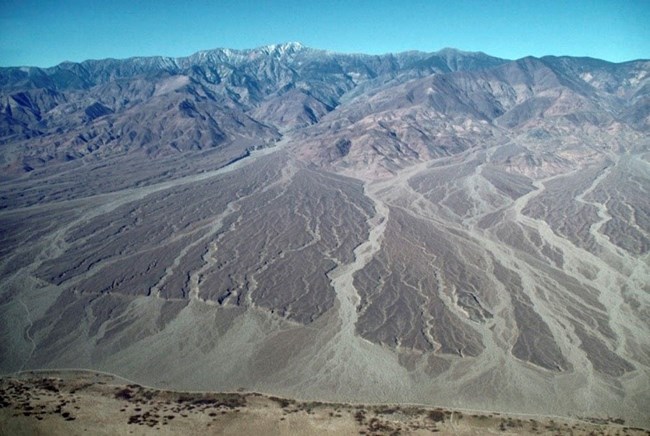
Photo by Marli Miller, geologypics.com. Used with permission. Strike-Slip FaultsStrike-slip faults cause lateral (side to side) displacement, and therefore are easiest to see from above. 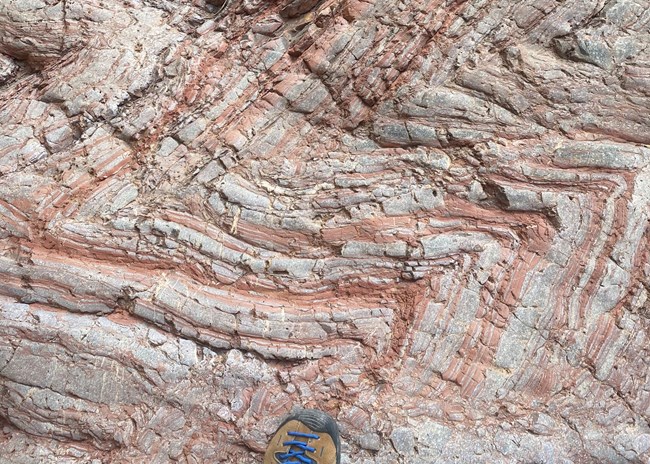
NPS / Christian Poutre Thrust FaultsThrust faults happen when rocks are under compression (pushing together), causing a break that stacks rock layers on top of eachother. |
Last updated: September 29, 2021
